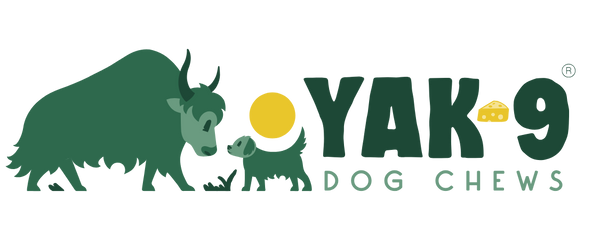YAK CHEWS VS. RAWHIDE: WHAT’S THE DIFFERENCE?
When selecting chew treats for dogs, understanding the differences between yak chews and rawhide is essential for making informed decisions that prioritize your pet’s health and safety.
So, what's the difference between Yak Chews and Rawhides?
Yak chews are crafted from a blend of yak and cow milk, salt, and lime juice, resulting in a natural, hard cheese product. They are free from artificial additives and preservatives, offering a wholesome treat option. In contrast, rawhide chews are made from the inner layer of animal hides, often undergoing extensive processing that may involve chemicals to clean and preserve the product.
Yak chews are highly digestible, breaking down more easily in a dog’s digestive system. They are less likely to splinter or break into large, hazardous pieces, reducing the risk of choking or intestinal blockage. Rawhide, however, has been associated with potential risks; if large chunks are ingested, they can pose choking hazards or lead to digestive issues, including blockages. Additionally, the chemical treatments used in processing rawhide can sometimes cause adverse reactions in dogs.
Yak chews offer nutritional benefits, being high in protein and low in fat, contributing positively to a dog’s diet. Rawhide chews, on the other hand, provide minimal nutritional value and serve primarily as a chewing outlet without significant dietary benefits.
Long Lasting feature of Yak Chews
Yak chews tend to last longer due to their dense composition. This longevity can provide extended engagement for dogs, making them a cost-effective choice for pet owners.
Conclusion
While both yak chews and rawhide serve the purpose of satisfying a dog’s natural urge to chew, yak chews offer a safer, more digestible, and nutritionally beneficial alternative. They provide long-lasting enjoyment without the health risks associated with rawhide, making them a preferable choice for conscientious pet owners.

